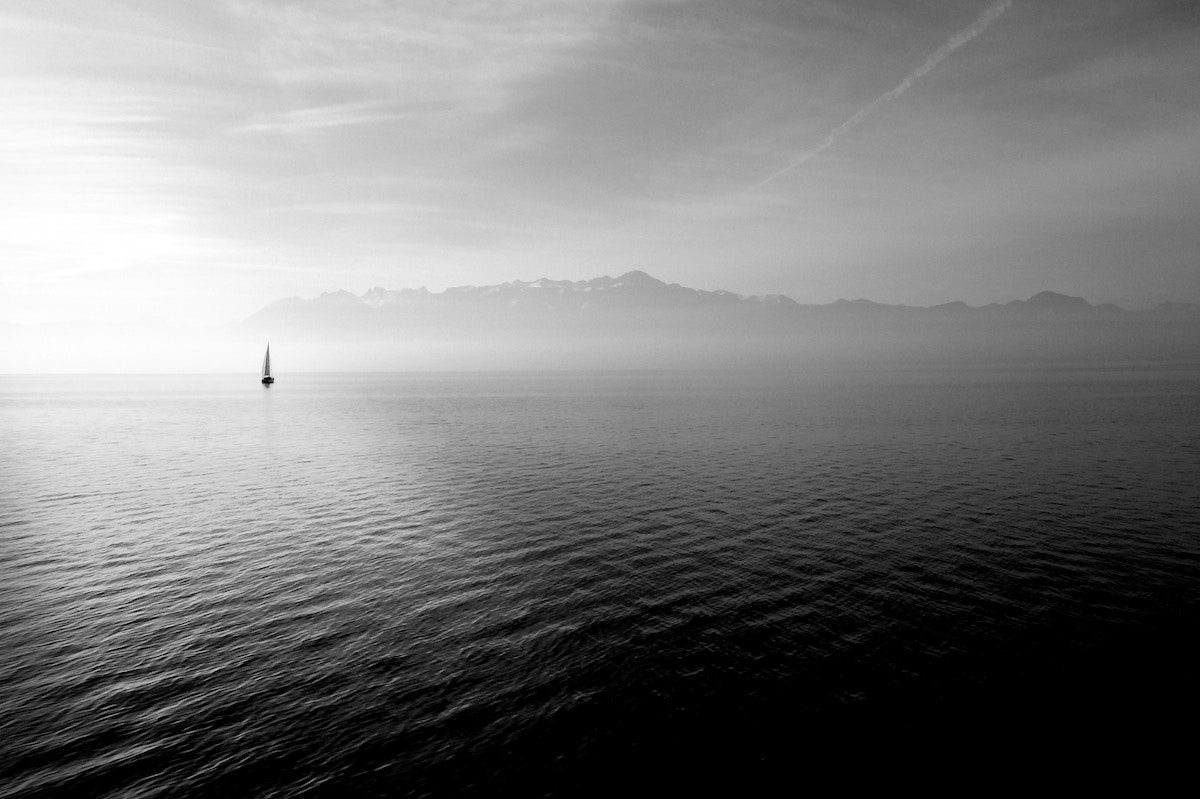
Nobody touch anything!
| Date: Friday, May 4, 2018. 1121Z |
| Location: 53.1631° N, 9.0760° W — Aughinish |
| WX: 12 knots from SE (235°). 14°. Waves: 0.5m |
“Nobody touch anything!” was Niall’s clear instruction to one and all.
It was a strange perspective, sitting on the high side of a Sigma 33, staring down at the sea directly below. As a dinghy sailor, I’m used to capsizing. I’m used to that slow-motion car crash as you traverse through the mental states of “yes, we can hold the spinnie on this reach”, through “I don’t think we’ll make it” and eventually “we’re going in…” Before I sailed and raced dinghies, I had expected a capsize to be a dramatic, instant inversion. One minute, you’re upright, sailing along enjoying the scenery. A brief nanosecond later, and you’re in the water with sail and boat on top of you. As it happens, it’s not like that. The boat heels and heels some more, releasing pressure as she increases the heel angle. But eventually gravity and Newton’s Laws intervene, and over she goes. It might take seconds, but it does indeed feel like minutes. There have been times when the capsize has been quite dramatic, explosive, even. Including that one particular time when Morgan and I decided to run dead downwind under spinnaker, in a Force 6. It was during the Laser II Regionals, and we smiled and laughed at the other boats under white sails, gybing their way downwind. Pride comes before a fall, as they might have said to us.
But this was different. This was a large, heavy keelboat on her ear. The technical definition of a capsize is the masthead is in the water. This wasn’t quite a capsize, then, but the masthead was definitely on the verge of going for a dip. The result of a nasty broach under spinnaker while ten miles offshore. Ten miles through bleak, drizzly Irish summer weather. The Mizzen Lighthouse was to the North of us, indistinct on the horizon. It’s an odd sensation, seeing the starboard lifelines under water, waves lapping over the winch and into the cockpit, even threatening the companionway, noticeably missing its washboards.
Like everyone else, I was on the high side of the boat, staring down at the water. I can’t remember what I was holding on to, but the distinct impression in my head was that letting go meant a cold, sea water swim.
In a situation like this, it’s normal to panic. It’s normal to want to quickly right the situation before it gets worse, which is why Niall’s shout out to not touch anything seemed incongruous. But I was the newbie on this boat and on this delivery. Everyone else had sailed on this boat as a team for years, and had an impressive array of trophies and prizes for their efforts. We were delivering the boat from Galway to Cork (if memory serves), so she could compete in Ford Cork Week as it was known back then. Suffice it to say, this wasn’t their first broach, nor would it be their last. An American colleague of theirs had done the previous delivery, and had been asleep in his bunk when they put the boat on her ear. He’d been unceremoniously dumped out of his berth, and had to extricate himself by walking on the side of the boat interior.
Is it better to sail with people who push the boat too hard and know what to do after the inevitable broach, or sail with people who don’t? Pushing a boat beyond her limits will result in a well-defined outcome. So, the question becomes, is it foolhardy to do this knowing the outcome, or foolhardy to sail a boat and never prepare yourself to deal with the outcome? That is one of those delicious questions which can liven up an otherwise boring afternoon at a sailing club bar.
In this particular case, after what seemed like hours of deliberation, which in fact took a few seconds of quick conversation, the kicker tension was released. The boom relaxed, depowering the mainsail. The boat popped back up like a cork, and we set about trying to tame the spinnaker, which was now thrashing about on the foredeck.
It certainly was intimidating, seeing such a large boat thrown asunder by the power of nature. There were quite a few moments where I wondered if we had indeed gone too far, and if I’d find myself treading water a scant ten miles offshore, wondering if the cold would render me unconscious before I drowned. But my crewmates were unperturbed. It was “painting by numbers” for them. There was a collective sense of “oh no, not again” from them as they got about setting the boat to rights. Just another day in the park. I can’t imagine there are many people in Galway Bay as experienced as those guys when it comes to righting a troubled ship. It’s true to say, if you’re going to broach a boat, ten miles offshore, then you’d want those guys on board with you. Some might also say, if they hadn’t been on board, we’d never have broached in the first place, but again you’re disappearing down the ugly vortex of a philosophical thought experiment, and let’s face it, life is too short for that!
An interesting footnote is that my own mother warned me not to sail with those guys, as she’d heard through a mutual acquaintance that Niall (our skipper) had been knocked unconscious by a spinnaker pole, such was their disregard for safety on the water. I had to laugh. I know for a fact he wasn’t knocked unconscious, because unfortunately, I was the one who hit him over the head. But that, as they say, is a story for another day.
Photo credit: Hugo Kerr

Comments